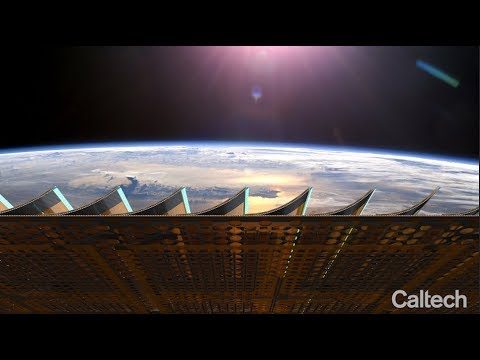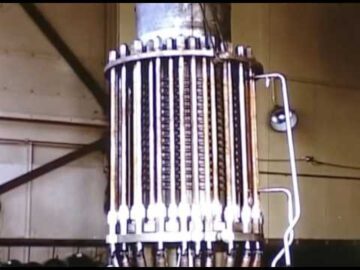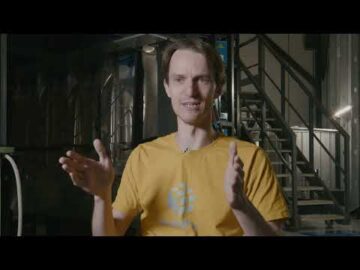The Space-based Solar Power Project (SSPP) at Caltech is working to deploy a constellation of modular spacecraft that collect sunlight, transform it into electricity, then wirelessly transmit that electricity wherever it is needed—including to places that currently have no access to reliable power.
Over a period of two years, they have built and demonstrated two prototype tiles. This is the key modular element that captures the sunlight and transmits the power. Through that process, they learned many things about how to design highly integrated and ultralight systems of this sort. The second space based solar power prototype tile is 33 percent lighter than the first.
The modular tiles are scaled into a larger array. They are mounted on a very flexible structure that can be folded to fit in a launch vehicle. Once deployed, the structure expands, and the tiles work in concert and in synchronization to generate energy, convert it, and transfer it exactly where you need it and nowhere else.
Caltech is working on three or four technology breakthroughs that, in combination, would transform the way space solar power.
Above – An array of small solar panels that are part of the Space Solar Power Project integrate photovoltaics, power transfer circuitry, and incorporate beam steering.
Credit: Caltech
By using novel folding techniques, inspired by origami, they are able to significantly reduce the dimensions of a giant spacecraft for launch. The packaging is so tight as to be essentially free of any voids.

Harnessing solar power in space relies on breakthrough advances in three main areas:
* Atwater’s research group is designing ultralight high-efficiency photovoltaics (materials that convert light into electricity) that are optimized for space conditions and compatible with an integrated modular power conversion and transmission system.
* Hajimiri’s research team is developing the low-cost and lightweight technology needed to convert direct current power to radio frequency power (which is used to transmit cell phone signals, for example) and send it to Earth as microwaves. The process is safe, Hajimiri explains. Non-ionizing radiation at the surface is significantly less harmful than standing in the sun. In addition, the system could be quickly shut down in the event of damage or malfunction.
* BPellegrino’s group is inventing foldable, ultrathin, and ultralight space structures to support the photovoltaics as well as the components needed to convert, transmit, and steer radio frequency power to where it is needed.
The basic unit of the system the researchers envision is a 4-inch-by-4-inch tile that weighs less than a tenth of an ounce. Hundreds of thousands of these tiles would combine into a system of flying carpet-like satellites that, once unfurled, would create a sunlight-gathering surface that measures 3.5 square miles.
Work on the SSPP has been supported by more than $100 million in funding from Donald Bren, chairman of the Irvine Company and a life member of the Caltech community, and his wife, Brigitte Bren, a Caltech trustee. The Northrup Grumman Corporation provided funding for initial feasibility studies.
برایان وانگ یک اندیشمند آینده نگر و یک وبلاگ نویس محبوب علم با 1 میلیون خواننده در ماه است. وبلاگ وی Nextbigfuture.com در رتبه 1 وبلاگ اخبار علم قرار دارد. این شامل بسیاری از فن آوری ها و روندهای مخرب از جمله فضا ، روباتیک ، هوش مصنوعی ، پزشکی ، بیوتکنولوژی ضد پیری و نانوتکنولوژی است.
او که به دلیل شناسایی فناوری های پیشرفته شهرت دارد ، در حال حاضر یکی از بنیانگذاران یک استارتاپ و جمع آوری کمک های مالی برای شرکت های بالقوه در مراحل اولیه است. او رئیس تحقیقات تخصیص سرمایه گذاری در فناوری عمیق و سرمایه گذار فرشته در Space Angels است.
او یک سخنران مکرر در شرکتها بوده است ، او سخنران TEDx ، سخنران دانشگاه Singularity و مهمان مصاحبه های متعدد برای رادیو و پادکست بوده است. او برای مشارکت عمومی و مشاوره مشارکت دارد.








